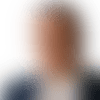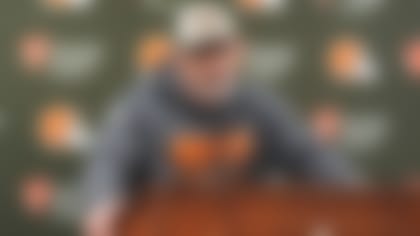In ranking the position groups of this year's draft, it's important to acknowledge the criteria. Obviously, identifying star-caliber players is one of the most significant factors, but there are only so many of those guys in any given draft. Depth is clearly very important, but determining "future starter" depth and "backup" depth helps to stack the positions more accurately.
Long story short: The pecking order below is the marriage of various assessments of the talent and depth at each position. And No. 1's a surprise to nobody who's been following this draft class ...
1) Interior defensive line: Defensive tackle has been held up as this draft's strong suit, and for good reason -- the position could produce as many as seven or eight of the top 50 players selected in this year's draft. Guys like Quinnen Williams, Christian Wilkins, Ed Oliver, Dexter Lawrence and Jeffery Simmons have received plenty of attention as first-round candidates, and the position's riches will spill into Day 2 of the draft. But the talent pool isn't limitless here. Teams that haven't addressed DT by Friday of draft weekend could be left in a lurch, as there isn't as much depth in the middle to late rounds.
2) Edge: While Josh Allen carries my highest grade as an edge talent, he's way behind Bradley Chubb from last year's class. That said, this year's group is much deeper overall. Allen and Montez Sweat have huge upside, but Nick Bosa might be the safer (though less explosive) option. Depending on whether or not teams reach for rushers, the strength of this position should be from about pick No. 24 until the end of the third round.
3) Interior offensive line: This position is helped out a great deal if Jonah Williams and Cody Ford are included here, instead of at tackle -- which is what I'm doing. Williams offers rare versatility, but many teams see him as a guard or center. Garrett Bradbury leads a list of three centers with instant-impact potential. There is enough guard depth to project a decent number of early starters and future starters headed all the way into the late-fourth and early-fifth round.
4) Offensive tackle: It won't receive as much mention, but this year's group of tackles offers a greater selection of starters and potential starters than we've seen since 2015. Jawaan Taylor and Andre Dillard will definitely go early, while Dalton Risner, Kaleb McGary and Greg Little all have a shot at going inside the top 40. Max Scharping and Tytus Howard are future starters at right and left tackle, respectively, while guys like Dennis Daley and Yodny Cajuste highlight a group of prospects offering good mid-round value.
5) Tight end: If your team needs a tight end, then you are in luck, relative to most drafts. In 2017, three tight ends went in Round 1 (O.J. Howard, Evan Engram and David Njoku), and there is an outside shot that could happen this year. Regardless, T.J. Hockenson, Noah Fant and Irv Smith Jr. are a talented top three, with upstarts like Kahale Warring, Dawson Knox, Jace Sternberger and Josh Oliver adding "future starter" value and solid depth available in Rounds 4-6.
6) Wide receiver: There aren't any "can't-miss" prospects in this group, but there is an interesting mixture of "solid" and "speculative" once you get into Rounds 2-4. D.K. Metcalf, Parris Campbell and Miles Boykin have rare traits, but require projection over tape. Hakeem Butler is big and physical, but he has loads of drops. Guys like Deebo Samuel, A.J. Brown and Marquise Brown add stability. This is a markedly better and deeper group than last year's class.
7) Safety: This group gets off to a slow start, considering it is missing anyone like Derwin James, Jamal Adams, Malik Hooker or Keanu Neal. However, from the early-second until the fourth or fifth round, there is pretty good quality and depth. This safety class has several players offering diversity or "big nickel" potential. There are some smaller safeties, like Jaquan Johnson, who are just good football players. With potential corner-to-safety transitions, this group becomes even deeper.
8) Quarterback: It can be argued that ultimately a quarterback group is only as good as the top three-to-five players in the bunch. This year's group has some splash at the top with Kyler Murray, Dwayne Haskins and, to a lesser extent, Drew Lock. However, I would argue that last year's QB class (particularly, the five first-rounders) was more talented -- and carried bigger upside -- than this group as a whole.
9) Running back: This is a down year for impact running backs, with one player (Josh Jacobs) likely to be targeted in the back half of the first round. It will be hard to find early starters in this group, but Damien Harris and David Montgomery feel like instant contributors, due to their style and consistency. While it is lighter at the top, this group offers solid depth in the middle rounds and should produce stout backups and committee candidates.
10) Cornerback: Your team picked a bad year to need a cornerback -- well, at least a CB1. Over the past three drafts, at least four cornerbacks have been picked in the first round (counting the versatile Minkah Fitzpatrick in last year's group). It could happen again this season, but some of those picks will be reaches. The trend of bigger, longer cornerback continues, and this is a fast cornerback group overall, but it lacks a bona fide star. Potential first-rounders like Deandre Baker and Byron Murphy are 4.5 40 guys. There is actually intriguing value on Day 3 in this group.
11) Linebacker: I wouldn't call this a "bad linebacker draft," but it definitely thins out earlier than many teams would probably like. Devin White and Devin Bush are legitimate first-round talents, but Mack Wilson may be the only true second-round candidate, while a relatively small group of linebackers could fill out Rounds 3 and 4. There is decent backup/special teams depth available on Day 3.
Follow Lance Zierlein on Twitter @LanceZierlein.












